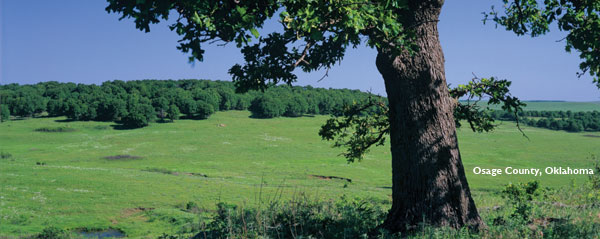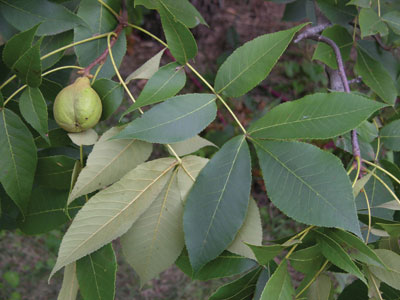|
back Home Cross TimbersGateway from forest to prairie Biodiversity of Oklahoma series |
|
Black Hickory
Carya texana
|
© Ronald Lance
|
Family: Juglandaceae (walnuts, hickories) Additional common name: Texas hickory Tree to 10 m (30 ft) tall and 30 cm (12 in) diameter, with irregular spreading crown. Bark blackish or dark gray, becoming thick, rough, and deeply furrowed on older trunks and branches. Twigs slender, brown, rusty-hairy when young. The single terminal bud is small, egg-shaped, with rusty-hairy overlapping scales. Leaves alternate, pinnately compound, 15-30 cm (6-12 in) long, rachis rusty-hairy when young. Leaflets 5 or usually 7, lanceolate, 5-15 cm (2-6 in) long, acuminate, finely serrate, rusty-hairy when young, becoming shiny dark green above, pale green below. Flowers catkins appearing in the early spring. Fruits rounded, 3-4 cm (1.2-1.6 in) long, with a thin husk. Seeds thick-shelled, edible. Distribution: Native to southeastern U. S., but absent from coastal areas and lowlands. Habitat: Eastern Cross Timbers and the drier portions of the Oak-Hickory and Oak-Pine forest types. Comment: The nuts of all the hickories are important food for wildlife, especially squirrels. The seeds of black hickory are thick-shelled but edible. Carya is the ancient Greek name for walnut; texana refers to Texas, where the species was first described. From the Catalog of the Woody Plants of Oklahoma by Johnson & Hoagland. |
|
back to species list |
PDF of all species profiles
|

